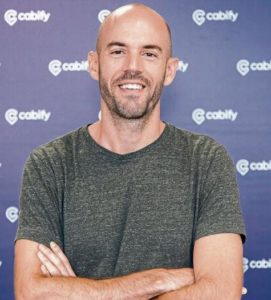How many times it has happened that you have booked a ride, and the driver has made you wait longer than the ETA, or while riding the cab, your driver has not behaved the way he should have. Though these ride-hailing companies do promise for the best and affordable rides, they are not always able to keep up to what they talk about. Cabify is a similar ride-hailing service that entirely focuses on providing the best experience to its riders and takes them really seriously. The service had started as an exclusive one for a particular group of people, but later the company also expanded its services for the cheaper rides.
Early Life and Career
Juan de Antonio was born and brought up in Spain. He completed a degree in Electronic Engineering from the Universidad Politécnica de Madrid. As soon he graduated, he worked for optimizing data networks. After that, he joined the BCG as a strategy consultant. To polish his business skills, Antonio started an MBA course at Stanford University.
On the completion of his MBA degree, he joined Boston Consulting Group and later, a California based motorcycles company, the Zero Motorcycles, as Business Development Director. He played a key role in raising nearly $20 million for the company. This success helped Antonio gain enough experience as well as the confidence to start his own entrepreneurial journey.
Founding Cabify

Antonio got the opportunity to travel to different locations because of his studies as well as different jobs. While roaming around the world, he faced a similar problem in every part of the world, hiring the taxies. Different places had different methods of hiring the taxies, and there was no fixed method to pay them. In some places, he got really cheap deals, and some places really amazed him with their high taxi fares. Also, the payment method being cash in most of the places always annoyed him.
This was the problem, he discussed with his colleagues, and his friends Adeyemi Ajao, who is also one of the founders of Tuenti, and Brendan Wallace. After talking to them, he realised that it was not only him who was facing the problem, but others were also the victims of the same issue.
Antonio started Cabify as “Executive” in 2011 and established the company’s first office in Madrid. Juan became the CEO of the company, Ajao and Wallace became his advisors. With Cabify, Antonio wanted to provide people with comfort and exclusive rides at affordable prices. The company collaborated with companies that would supply them luxury cars like Mercedes and Audi.
The Rise
Within six months of its inception, Cabify registered around 20,000 users. In its first round of funding the company raised $1.6 million, Black Vine, Belgian fund Emerge, and AngelList, being the major investors. The company used the money for its expansion and opened its offices in Mexico, Chile and Peru.
The company was started to provide high-end car-rentals, but in 2013, the company started Cabify Lite, that would provide mid-range taxi services to its users. In April 2014, Cabify hosted another round of funding led by Seaya Ventures and raised an $8 million investment. The same year, the Cabify app had been downloaded 100,000 times globally.
Rakuten, Japanese e-commerce, made a major investment in Cabify, helping the company to further expand its services and raise its revenues to $40 million in October 2015. With the Hoy No Circula program in Mexico, the company reduced its fares by 25% to provide people with affordable rides. This helped the company to generate 200% demands in the country.
The Success
In 2016, Cabify raised $120 million in another round of funding, where Rakuten alone invested $92 million in Cabify. After the funding round, the company started its expansion to Argentina, Brazil, Portugal, etc. The funding round made it value at $320 million in the same year. The company has started with 20 employees, and by 2016, 400 employees had joined the company globally.
In January 2018, with another round of funding, Cabify raised $160 million from its existing and new investors, including Rakuten Capital, TheVentureCity, Endeavor Catalyst, GAT Investments, Liil Ventures, WTI, and valued at $1.4 billion, becoming the unicorn. Today, Cabify is operating in 14 countries.
The Difference
Though the company has got a similar business model as of Uber and Didi, the company has got some features that have made it successful in very less time. The company has decided a uniform for the drivers to handle the rides professionally. Cabify charges its customers per kilometre. Unlike Uber and other companies as well, Cabify does not change its prices on the peak hours, or according to minutes and kilometres, a passenger has spent time in the vehicle. Also, as Uber makes it easy for people to earn extra money in the spare time, Cabify has made driving the main source of income for the drivers to keep the job serious enough for them, so that they can provide the best experience to the passengers.

Yashica is a Software Engineer turned Content Writer, who loves to write on social causes and expertise in writing technical stuff. She loves to watch movies and explore new places. She believes that you need to live once before you die. So experimenting with her life and career choices, she is trying to live her life to the fullest.
